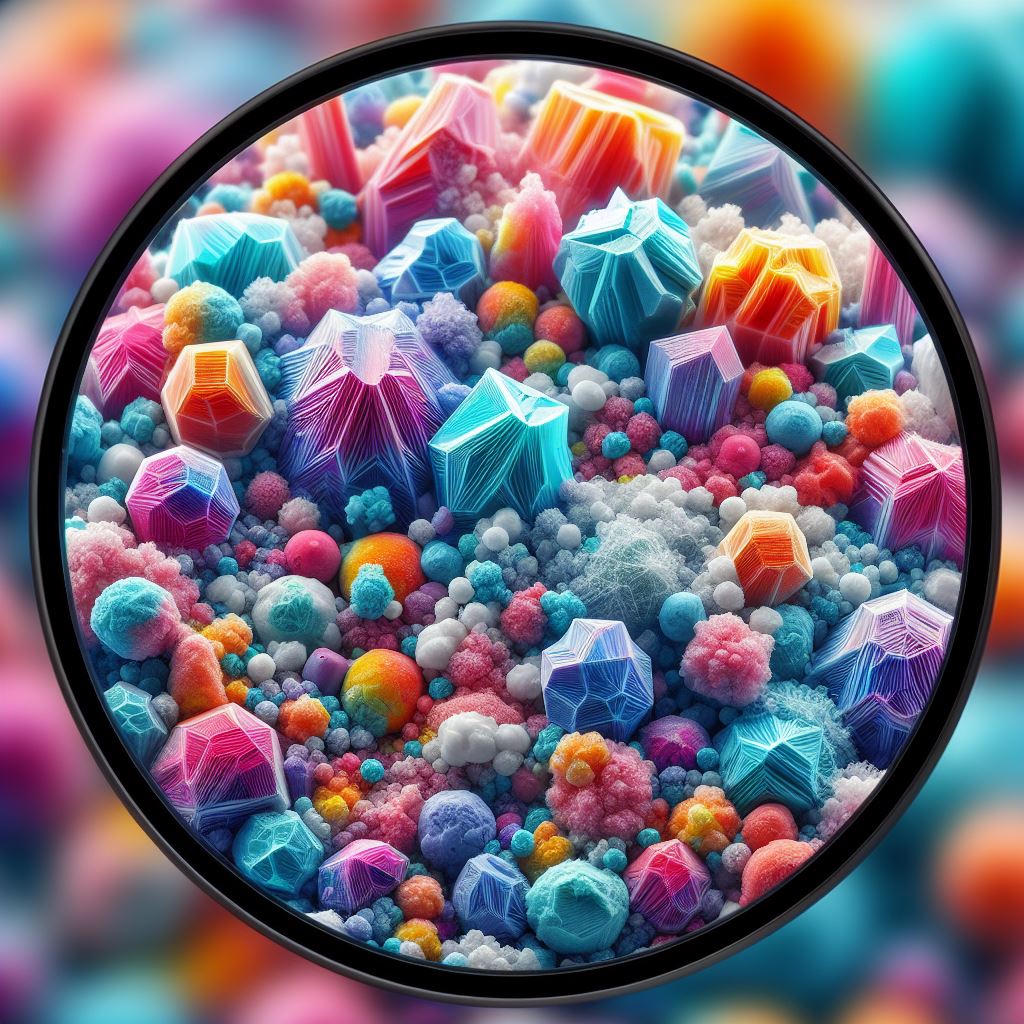Introduction
The debate over “Titanium Dioxide Friend or Foe?” has become increasingly prominent in recent years. As consumers become more conscious about the ingredients in their products, titanium dioxide (TiO2) has found itself under intense scrutiny. This comprehensive guide aims to unravel the complexities surrounding this ubiquitous compound and answer the burning question: Is titanium dioxide a friend or foe?
What is Titanium Dioxide?
Titanium dioxide is a naturally occurring oxide of titanium, appearing as a fine, white powder. Its unique properties have made it an essential ingredient in various industries, leading many to ponder, “Titanium Dioxide Friend or Foe?”
Chemical Properties Table
| Property | Description |
|---|---|
| Chemical Formula | TiO2 |
| Appearance | White solid |
| Density | 4.23 g/cm³ |
| Melting Point | 1,843°C |
| Boiling Point | 2,972°C |
| Crystal Structure | Rutile, Anatase, Brookite |
| Solubility in Water | Insoluble |
Historical Background
The journey of titanium dioxide from its discovery to widespread use spans over two centuries. Understanding its history helps provide context to the ongoing “Titanium Dioxide Friend or Foe?” debate.

Timeline of Major Developments
| Year | Development |
|---|---|
| 1791 | First discovery in England |
| 1916 | Commercial production begins |
| 1946 | Mass production techniques developed |
| 1969 | FDA approves as food coloring |
| 2021 | EU announces ban in food products |
Applications and Uses: Titanium Dioxide Friend or Foe
The versatility of titanium dioxide has led to its incorporation in numerous products, further fueling the “Titanium Dioxide Friend or Foe?” discussion.
Common Applications Table
| Industry | Applications |
|---|---|
| Food | Coloring agent, whitening |
| Cosmetics | Sunscreens, makeup |
| Paint | White pigment, opacity |
| Pharmaceuticals | Tablet coating |
| Construction | Self-cleaning surfaces |
| Textiles | UV protection |
Safety Concerns and Studies: Titanium Dioxide Friend or Foe
The question “Titanium Dioxide Friend or Foe?” often centers around safety concerns. Let’s examine the scientific evidence.
Key Studies Overview
| Study Year | Findings | Impact |
|---|---|---|
| 2006 | IARC classifies TiO2 as possibly carcinogenic | Increased scrutiny |
| 2015 | EU review of food-grade TiO2 | Safety reassessment |
| 2019 | French ban announcement | Market shifts |
| 2022 | Updated safety assessments | Ongoing evaluation |
Benefits and Advantages
While considering “Titanium Dioxide Friend or Foe?”, it’s crucial to acknowledge its beneficial properties.
Benefits Summary
| Benefit Category | Advantages |
|---|---|
| UV Protection | Blocks harmful rays |
| Color Enhancement | Provides opacity and whiteness |
| Cost-effectiveness | Economical white pigment |
| Stability | Long shelf life |
| Versatility | Multiple applications |
Regulatory Standards
Different regions have varying approaches to regulating titanium dioxide, adding complexity to the “Titanium Dioxide Friend or Foe?” debate.

Global Regulatory Status: Titanium Dioxide Friend or Foe
| Region | Regulatory Status |
|---|---|
| USA | FDA approved with limitations |
| EU | Banned in food products |
| Asia | Varies by country |
| Australia | Approved with restrictions |
| Canada | Permitted with guidelines |
Environmental Impact
The environmental aspect of the “Titanium Dioxide Friend or Foe?” question deserves careful consideration.
Environmental Considerations Table
| Aspect | Impact |
|---|---|
| Production | Energy-intensive |
| Waste Management | Recyclable |
| Water Systems | Potential nanoparticle effects |
| Air Quality | Dust control needed |
| Ecosystem | Long-term studies ongoing |
Future Perspectives
Looking ahead, the “Titanium Dioxide Friend or Foe?” debate continues to evolve.
Future Trends Table
| Trend | Projected Impact |
|---|---|
| Alternative Development | New substitutes emerging |
| Nano Innovation | Advanced applications |
| Green Production | Sustainable methods |
| Consumer Awareness | Increased scrutiny |
| Regulatory Changes | Stricter oversight |
Frequently Asked Questions (FAQs)
Q1: Is titanium dioxide natural or synthetic?
A: While titanium dioxide occurs naturally, commercial TiO2 is typically manufactured through synthetic processes.
Q2: Why is titanium dioxide used in so many products?
A: Its versatility, effectiveness as a white pigment, and UV-blocking properties make it valuable across industries.
Safety Concerns
Q3: Is titanium dioxide safe in sunscreen?
A: Studies generally support its safety in sunscreen formulations when used as directed.
Q4: Can titanium dioxide cause cancer?
A: While some studies suggest potential risks, current evidence indicates it’s safe when used as regulated.
Environmental Impact
Q5: Is titanium dioxide environmentally friendly?
A: The environmental impact varies depending on production methods and application.
Q6: How does titanium dioxide affect marine life?
A: Research is ongoing regarding nanoparticle effects on aquatic ecosystems.
Usage and Applications
Q7: Why is titanium dioxide used in food?
A: It’s primarily used as a white coloring agent and to enhance opacity.
Q8: Can I avoid titanium dioxide in products?
A: Yes, by reading labels and choosing products specifically formulated without it.
Regulatory Questions
Q9: Why did some countries ban titanium dioxide?
A: Concerns about nanoparticle safety led to precautionary bans in some regions.
Q10: How is titanium dioxide regulated?
A: Regulations vary by country and application, with food and cosmetic uses under strict oversight.
Comparison Table: Friend vs. Foe Aspects
| Aspect | Friend | Foe |
|---|---|---|
| UV Protection | Effective sun protection | Potential nanoparticle concerns |
| Food Use | Approved colorant | Some safety questions |
| Environmental | Stable compound | Energy-intensive production |
| Cost | Economical | Some alternatives needed |
| Safety | Generally recognized as safe | Ongoing research needed |
Conclusion
The question “Titanium Dioxide Friend or Foe?” doesn’t have a simple answer. While this compound offers numerous benefits and has been safely used for decades, ongoing research and evolving regulations suggest a nuanced approach to its use. Consumers should stay informed about current research and regulations while making personal choices based on their specific needs and concerns.
As we continue to study and understand titanium dioxide, the balance between its benefits and potential risks will likely become clearer. Until then, responsible use, continued research, and transparent communication remain essential for all stakeholders involved in the production, regulation, and use of this versatile compound.
Key Takeaways
- Titanium dioxide has numerous beneficial applications across industries
- Safety assessments are ongoing and evolving
- Regulatory approaches vary globally
- Environmental impacts require further study
- Consumer awareness and choice remain important
- Future innovations may address current concerns
The “Titanium Dioxide Friend or Foe?” debate will likely continue as new research emerges and regulations evolve. Staying informed and understanding both the benefits and potential risks is crucial for making educated decisions about products containing this ubiquitous compound.






Pingback: Titanium Dioxide Powder 101: Everything You Need To Know - Safe Climber Overseas Pvt. Ltd.